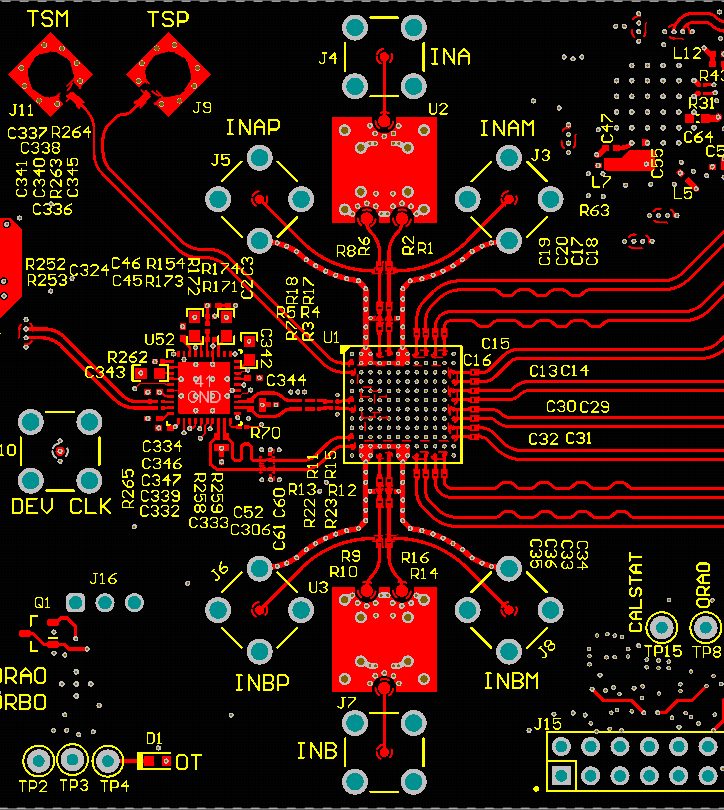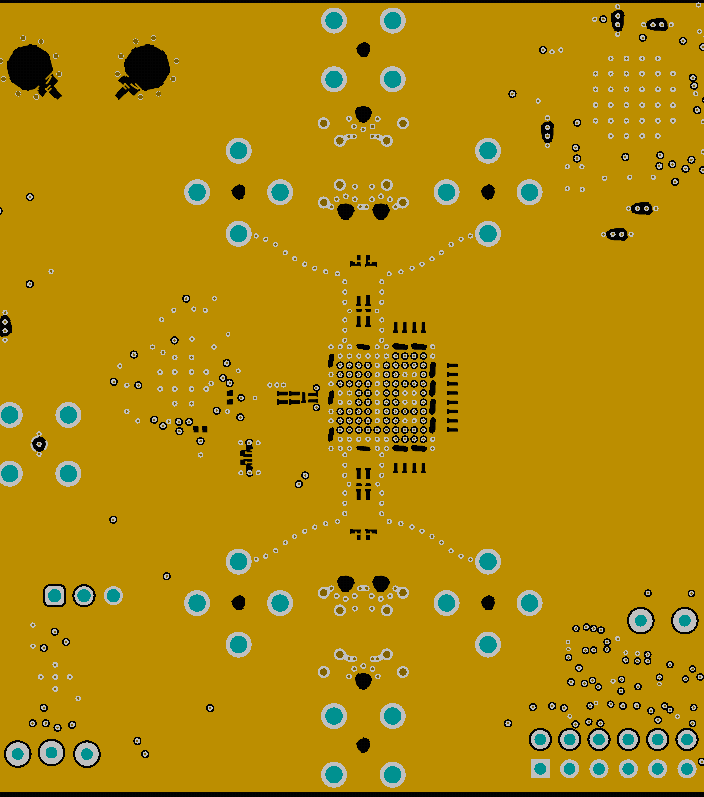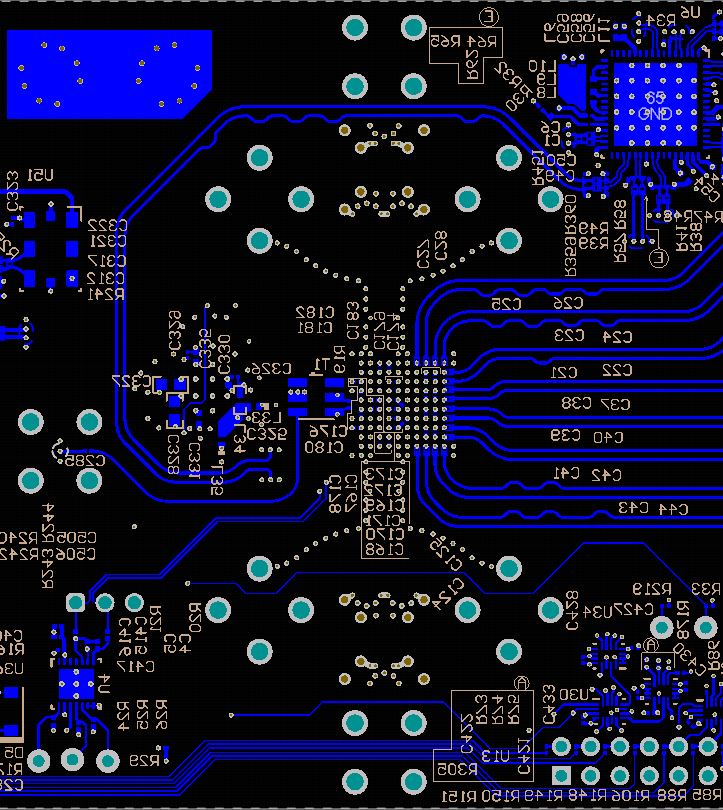JAJSKZ0A August 2021 – May 2022 ADC08DJ5200RF
PRODUCTION DATA
- 1 特長
- 2 アプリケーション
- 3 概要
- 4 Revision History
- 5 Pin Configuration and Functions
-
6 Specifications
- 6.1 Absolute Maximum Ratings
- 6.2 ESD Ratings
- 6.3 Recommended Operating Conditions
- 6.4 Thermal Information
- 6.5 Electrical Characteristics: DC Specifications
- 6.6 Electrical Characteristics: Power Consumption
- 6.7 Electrical Characteristics: AC Specifications (Dual-Channel Mode)
- 6.8 Electrical Characteristics: AC Specifications (Single-Channel Mode)
- 6.9 Timing Requirements
- 6.10 Switching Characteristics
- 6.11 Typical Characteristics
-
7 Detailed Description
- 7.1 Overview
- 7.2 Functional Block Diagram
- 7.3
Feature Description
- 7.3.1 Device Comparison
- 7.3.2 Analog Inputs
- 7.3.3 ADC Core
- 7.3.4 Temperature Monitoring Diode
- 7.3.5 Timestamp
- 7.3.6 Clocking
- 7.3.7 Programmable FIR Filter (PFIR)
- 7.3.8
JESD204C Interface
- 7.3.8.1 Transport Layer
- 7.3.8.2 Scrambler
- 7.3.8.3 Link Layer
- 7.3.8.4 8B/10B Link Layer
- 7.3.8.5
64B/66B Link Layer
- 7.3.8.5.1 64B/66B Encoding
- 7.3.8.5.2 Multiblocks, Extended Multiblocks and the Local Extended Multiblock Clock (LEMC)
- 7.3.8.5.3 Block, Multiblock and Extended Multiblock Alignment using Sync Header
- 7.3.8.5.4 Initial Lane Alignment
- 7.3.8.5.5 Block, Multiblock and Extended Multiblock Alignment Monitoring
- 7.3.8.6 Physical Layer
- 7.3.8.7 JESD204C Enable
- 7.3.8.8 Multi-Device Synchronization and Deterministic Latency
- 7.3.8.9 Operation in Subclass 0 Systems
- 7.3.9 Alarm Monitoring
- 7.4
Device Functional Modes
- 7.4.1 Dual-Channel Mode
- 7.4.2 Single-Channel Mode (DES Mode)
- 7.4.3 Dual-Input Single-Channel Mode (DUAL DES Mode)
- 7.4.4 JESD204C Modes
- 7.4.5 Power-Down Modes
- 7.4.6 Test Modes
- 7.4.7 Calibration Modes and Trimming
- 7.4.8 Offset Calibration
- 7.4.9 Trimming
- 7.5 Programming
- 7.6 SPI Register Map
- 8 Application Information Disclaimer
- 9 Power Supply Recommendations
- 10Layout
- 11Device and Documentation Support
- 12Mechanical, Packaging, and Orderable Information
10.2 Layout Example
Figure 10-1 to Figure 10-3 provide examples of the critical traces routed on the device evaluation module (EVM).
 Figure 10-1 Top Layer Routing: Analog Inputs, CLK and SYSREF, DA0-3, DB0-3
Figure 10-1 Top Layer Routing: Analog Inputs, CLK and SYSREF, DA0-3, DB0-3 Figure 10-2 GND1 Cutouts to Optimize Impedance of Component Pads
Figure 10-2 GND1 Cutouts to Optimize Impedance of Component Pads Figure 10-3 Bottom Layer Routing: Additional CLK Routing, DA4-7, DB4-7
Figure 10-3 Bottom Layer Routing: Additional CLK Routing, DA4-7, DB4-7